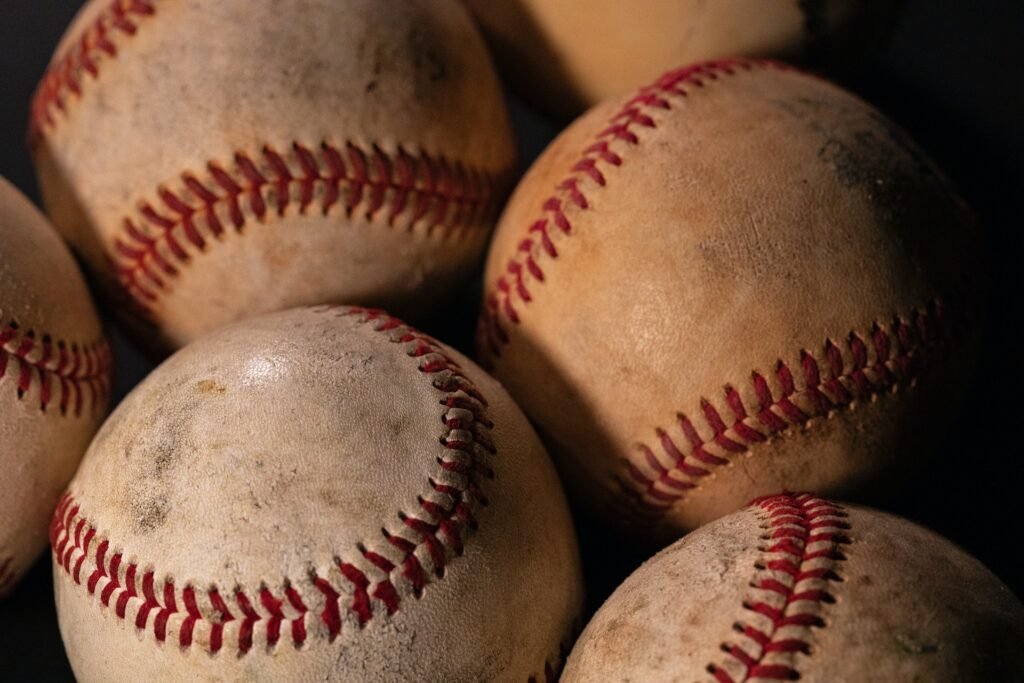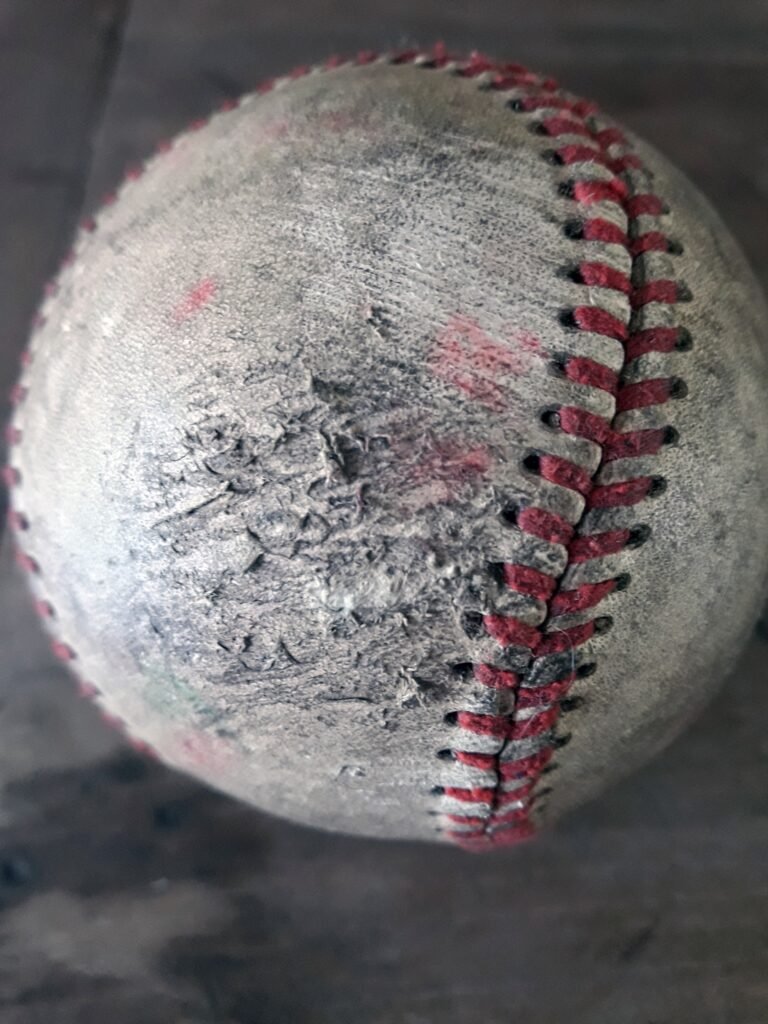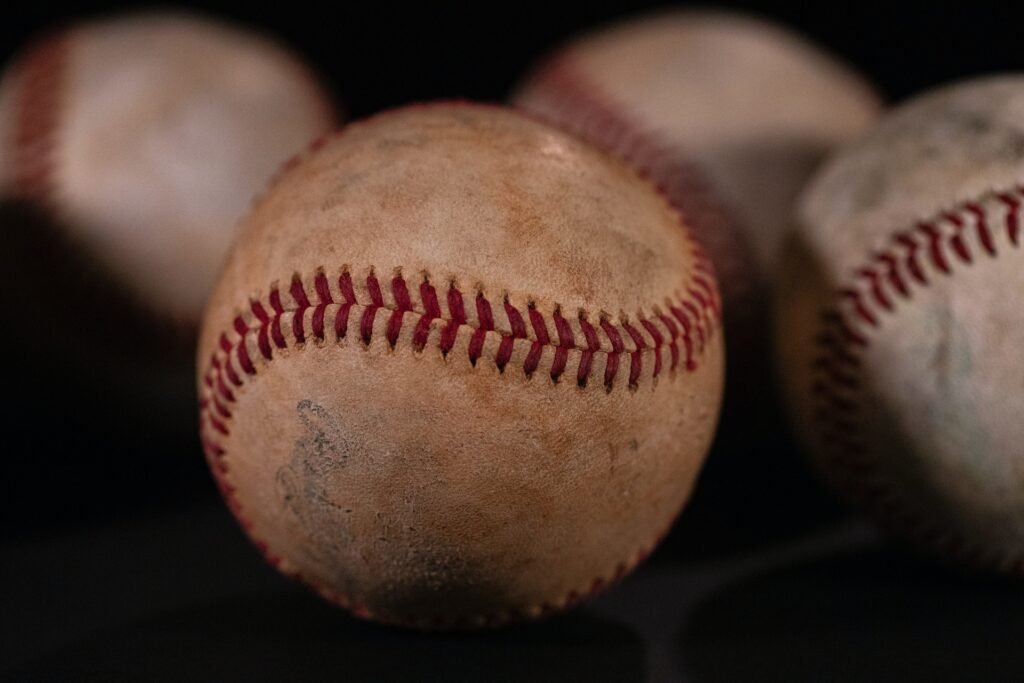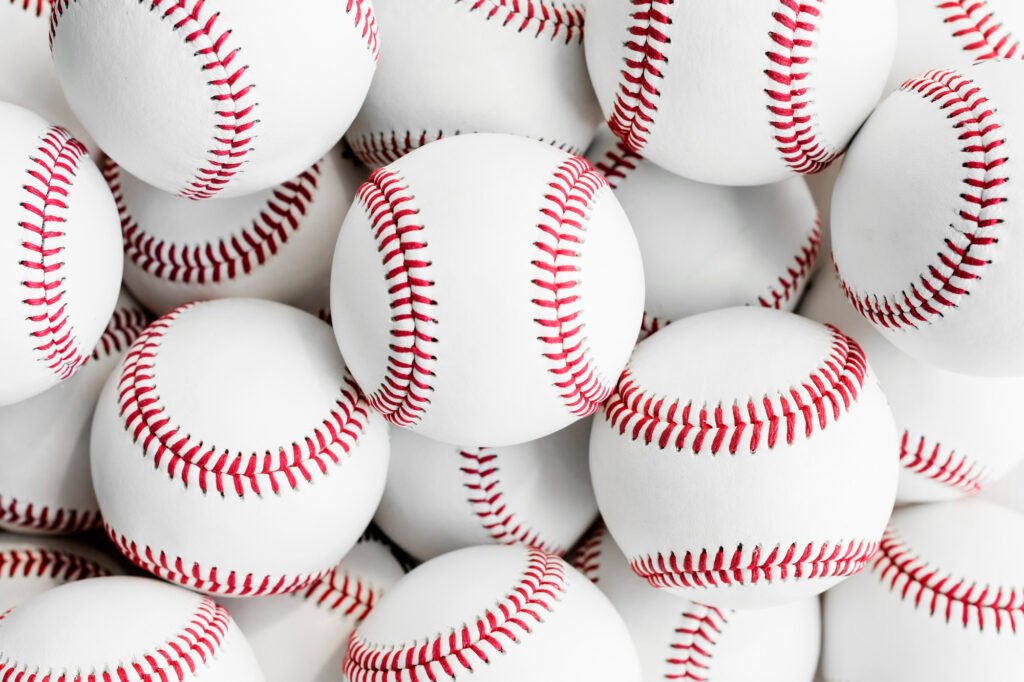How Much Does a Baseball Weigh in Pounds?
- February 19, 2024
- 0
A baseball weighs between 5 and 5.25 ounces, which is equivalent to 0.3125 to 0.3281 pounds or 141.75 to 149.07 grams. The weight of a baseball plays a
A baseball weighs between 5 and 5.25 ounces, which is equivalent to 0.3125 to 0.3281 pounds or 141.75 to 149.07 grams. The weight of a baseball plays a

A baseball weighs between 5 and 5.25 ounces, which is equivalent to 0.3125 to 0.3281 pounds or 141.75 to 149.07 grams. The weight of a baseball plays a crucial role in the game of baseball.
In this article, I’ll explore why baseball weight matters so much, the history of baseball weight, the materials used to make baseballs. We’ll also take a look at how factors such as temperature and humidity can impact baseball weight and player safety.
So, let’s join me as I’m going to explore how much does a baseball weigh and why it matters. Get ready to hit a home run with your newfound knowledge of baseball weight!
In accordance with Major League Baseball (MLB) rules, a baseball must weigh between 5 and 5.25 ounces (141.75 to 148.83 grams) with a circumference of 9 to 9.25 inches (22.86 to 23.5 cm). The weight of a baseball may seem small, but it can have a significant impact on the game, affecting pitch speed, movement, and trajectory.

In fact, pitchers often try to manipulate the weight and grip of the ball to achieve their desired pitching outcomes. Overall, the precise weight and dimensions of a baseball are closely regulated to ensure fair and consistent play across all levels of baseball.
There are a few other specifications that MLB has set for baseballs. For example, the leather used for the cover of the ball must be high-quality cowhide, and the stitching on the ball must be red in color and must be raised no more than 0.047 inches (0.12 cm) above the surface of the ball.
Interestingly, the weight and size of a baseball have actually changed over time. In the early days of baseball, the ball was significantly larger and softer than the modern-day version, and the weight could vary widely depending on the manufacturer. Over time, as the rules of the game became more standardized, the ball evolved to its current form.
Baseball is a sport with a rich and fascinating history that spans more than a century. The origins of baseball are somewhat murky, but it is believed that the sport evolved from a number of different games that were popular in the 18th and 19th centuries.
Let’s take a closer look to the rich history of baseball over the years.
During the Dead Ball Era, baseballs were typically made with a rubber or cork core that was wrapped in yarn and covered with leather.

The balls were relatively small and heavy, weighing between 5 and 5.25 ounces, and they were not as tightly wound as modern baseballs.
In the early 1920s, baseballs underwent a significant change with the introduction of a new type of ball that was wound tighter and had a more lively bounce.
These balls had a rubber or cork core that was wrapped in a layer of tightly-wound yarn, followed by a layer of rubber cement, and then covered with leather.

The weight of the ball remained the same as during the Dead Ball Era, weighing between 5 and 5.25 ounces, but the construction of the ball allowed for greater power hitting and a greater emphasis on offense.
During World War II, baseballs were made with a slightly different construction due to wartime shortages of materials.
The balls were still made with a cork or rubber core that was wrapped in yarn and covered with leather, but the amount of yarn used in the ball was reduced, making the balls lighter and softer.
The balls weighed between 4.5 and 4.75 ounces, and the reduced weight and softer construction made them easier to hit for both power and average.
Following World War II, baseballs returned to their pre-war construction, with a cork or rubber core that was wrapped in a layer of tightly-wound yarn, followed by a layer of rubber cement, and then covered with leather.
The weight of the ball remained between 5 and 5.25 ounces, and the tighter construction of the ball led to a continuation of the power hitting and offensive emphasis that had emerged in the Live Ball Era.
During the Expansion Era, which saw the addition of several new teams to Major League Baseball, baseballs were made with a cork or rubber core that was wrapped in yarn and covered with leather, but the construction of the ball was changed slightly to reduce the number of home runs being hit.
The balls were wound less tightly, making them slightly softer and reducing the amount of bounce they had. The weight of the ball remained same.
Baseballs used in the modern era are made with a cork or rubber core that is wrapped in several layers of tightly-wound yarn, followed by a layer of rubber cement, and then covered with leather.

The balls are wound more tightly than in previous eras, making them more lively and resulting in more home runs being hit.
The weight of the ball still remains same. In recent years, there have been some changes to the construction of baseballs to reduce the number of home runs being hit, but the basic design and weight of the ball remains the same.
The process of making baseballs involves multiple steps and materials. The core of the baseball is made of cork or rubber, which is then wrapped with several layers of yarn. The yarn is typically made of wool or a blend of wool and synthetic fibers, and it’s wound around the core in a specific pattern to affect the ball’s flight characteristics.
A layer of rubber cement is applied to the yarn to hold it in place, and then the ball is covered in leather. The leather is cut into two pieces, which are then sewn together to cover the ball. Finally, the ball is subject to rigorous quality control standards to ensure it meets MLB regulations. The manufacturing process involves a combination of traditional craftsmanship and modern techniques to produce a durable and consistent product.
Here is the step by step process of How baseballs are made.
The core of the baseball is made by molding cork or rubber into a round shape.
The core is then wrapped in several layers of yarn, which is typically made of wool or a blend of wool and synthetic fibers. The yarn is wound tightly around the core in a specific pattern, which affects the ball’s flight characteristics.
Once the yarn winding is complete, a layer of rubber cement is applied to the ball. This layer helps hold the yarn in place and gives the ball a smooth surface for the leather cover to be applied.
The final step in the baseball manufacturing process is to cover the ball in leather. The leather is cut into two pieces and sewn together around the ball, leaving a small opening where the cork or rubber core is visible. The stitching on the leather cover also affects the ball’s flight characteristics.

Baseballs are subject to rigorous quality control standards to ensure they meet MLB regulations. The balls are measured and weighed to ensure they are the correct size and weight, and they are also tested for compression and coefficient of restitution (COR) to ensure they perform consistently.
At end, how much does a baseball weigh? the weight of a baseball is a crucial element of the game, with precise regulations governing its size and weight to ensure consistency and fairness. The official weight of a baseball in the MLB is between 5 and 5.25 ounces, with a circumference of 9 to 9.25 inches.
The history of baseball has seen various eras, each with its unique ball design and weight, from the dead ball era to the modern era. The materials and manufacturing process used to make a baseball have also evolved over the years, resulting in a durable and consistent product that is loved by fans worldwide.
Understanding the weight of a baseball is just one aspect of appreciating the game’s rich history and the importance of the ball in its development. Whether you’re a seasoned fan or a curious newcomer, the weight of a baseball is just one fascinating aspect of America’s pastime.
Here are some most frequently asked questions
The official weight of a baseball in the MLB is between 5 and 5.25 ounces. This is equivalent to approximately 0.31 to 0.33 pounds. The weight of a baseball is an important aspect of the game, with precise regulations to ensure consistency and fairness.
The weight of a MLB baseball is regulated by the league and is set between 5 and 5.25 ounces, which is equivalent to 0.31 to 0.33 pounds. This weight range is carefully measured to ensure consistency and fairness in the game. Any variation in weight could significantly impact the ball’s flight and make it difficult for pitchers, batters, and fielders to play the game effectively. As such, the weight of a baseball is an essential element of the game’s rules and regulations, and its manufacturing process is subject to rigorous quality control standards to ensure consistency and accuracy.
A baseball weighs between 0.1417 and 0.1474 kilograms, or 141.7 to 147.4 grams.
Yes, a softball generally weighs more than a baseball. The official weight of a softball is between 6.25 and 7 ounces, which is equivalent to 0.39 to 0.44 pounds or approximately 177 to 198 grams. In comparison, a baseball weighs between 5 and 5.25 ounces or 0.31 to 0.33 pounds. So, a softball is slightly heavier than a baseball.